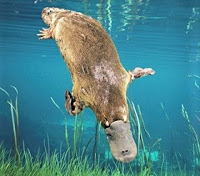Watch the webinar “HPAI and Its Impact on Food Production Industries”
 Now scientists can apply powerful new tools that have the potential to revolutionize agricultural practices and food production. Amazing advances in genome editing mean that we can breed hornless cattle, fast-growing salmon, and pigs that might resist diseases. Some scientists, organizations, and members of the public urge caution, and government agencies are debating what types of regulations should apply. The following links are just a few of the many articles and research papers that deal with this important topic:
Now scientists can apply powerful new tools that have the potential to revolutionize agricultural practices and food production. Amazing advances in genome editing mean that we can breed hornless cattle, fast-growing salmon, and pigs that might resist diseases. Some scientists, organizations, and members of the public urge caution, and government agencies are debating what types of regulations should apply. The following links are just a few of the many articles and research papers that deal with this important topic:

Alison Van Eenennaam at the UC Davis Cattle Facility
Science has been affecting livestock for a long time. When I was growing up on a farm, selective breeding was common, and artificial insemination was the buzz. We kids just saw our livestock as steers we had to feed and pigs that produced manure we had to pitch. The only biotech creature we had were bullheads we occasionally caught in the pasture creek. A sinister-looking, oily skinned fish with beady eyes, it has stingers that we were convinced would paralyze us. Of course, that was a childhood myth, but we had to fantasize with what we had. After all, no duck-billed platypus swam the streams of Iowa. I guess we’ll see what animals inhabit the feedlots of our future.
by Dan Gogerty (top pic from worldwildlife.org and bottom from kpeterson)
Your donation to CAST helps support the CAST mission of communicating science to meet the challenge of producing enough food, fiber and fuel for a growing population. Every gift, no matter the size, is appreciated.